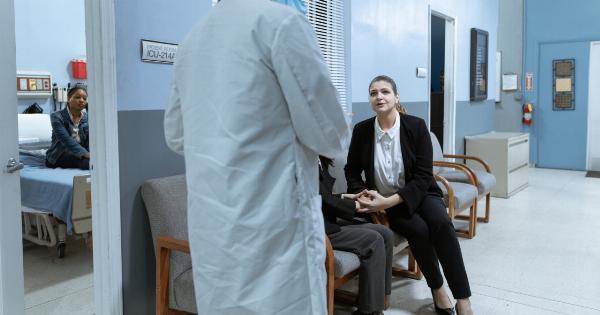Cervical cancer screening is a vital preventive measure that has significantly reduced the incidence and mortality rates associated with this type of cancer.
The introduction of regular Pap smears and the subsequent development of human papillomavirus (HPV) testing have revolutionized the early detection of cervical abnormalities and helped identify high-risk individuals for timely intervention. However, as with any medical procedure or screening test, there comes a time when it may be appropriate to discontinue cervical cancer screening.
This article explores various factors to consider when deciding to stop screening and highlights the latest guidelines and recommendations in this regard.
The Evolution of Cervical Cancer Screening
Over the years, cervical cancer screening guidelines have evolved based on advances in medical knowledge and technology.
The introduction of Pap smears as a screening tool in the 1940s paved the way for identifying abnormal cervical cells early on, allowing for prompt treatment and improved outcomes. Subsequently, the discovery of the role of high-risk HPV in cervical cancer led to the development of HPV testing as an adjunct to Pap smears.
This dual testing approach revolutionized screening accuracy and enhanced the ability to detect precancerous lesions.
Benefits and Limitations of Cervical Cancer Screening
Regular cervical cancer screening has numerous benefits. It enables early detection of abnormal cervical cells or HPV infections, allowing for timely intervention to prevent the progression to cancer.
Screening also provides an opportunity to educate women about the importance of safe sexual practices, vaccination against HPV, and regular check-ups. However, screening also has its limitations, including false-positive results, which may lead to unnecessary invasive procedures, patient anxiety, and increased healthcare costs.
Additionally, screening does not completely eliminate the risk of developing cervical cancer, as some cases may still occur despite regular screening.
The Role of Age in Discontinuing Screening
One of the key factors to consider when deciding to discontinue cervical cancer screening is the patient’s age.
The risk of developing cervical cancer decreases significantly in women over the age of 65 who have had regular negative screening results and no history of high-grade cervical lesions. The incidence of precancerous lesions and HPV infections declines with age, making continued screening less necessary in this population.
However, it is important to note that women with a history of high-grade lesions or a compromised immune system may still benefit from ongoing screening despite their age.
Length of Screening Intervals
Screening intervals are another crucial aspect to consider when determining the appropriateness of discontinuing cervical cancer screening.
The recommended screening intervals differ based on the screening modalities utilized and the individual’s risk factors. The general guideline for low-risk individuals is to have a Pap smear every three years, while high-risk individuals or those with abnormal results may require more frequent screening.
However, as women age and their risk profile changes, lengthening the screening intervals might be considered. Extended intervals can minimize unnecessary procedures and reduce the burden on healthcare systems.
Impact of Vaccination Status
The advent of HPV vaccines has had a significant impact on cervical cancer prevention. Vaccination can protect against the most common high-risk HPV types responsible for causing cervical cancer.
Women who have received the HPV vaccine are at a lower risk of developing cervical abnormalities, and their need for regular screening may be reduced. However, it is important to note that the vaccine does not provide complete protection against all HPV types, and women should still undergo appropriate screening based on other risk factors, including age and sexual history.
Vaccination status should be considered when making decisions regarding discontinuing cervical cancer screening.
Individual Risk Factors and Medical History
Alongside age and vaccination status, individual risk factors and medical history play a crucial role in determining when to stop cervical cancer screening.
Women with a history of high-grade cervical lesions, previous treatment for cervical cancer, or a compromised immune system may require more regular and prolonged screening, regardless of their age. Additionally, individuals with a history of sexual practices that increase the risk of HPV infection, such as multiple sexual partners or engaging in unprotected intercourse, may warrant continued screening even as they age.
Shared Decision-Making with Healthcare Providers
The decision to discontinue cervical cancer screening should always be made through shared decision-making between patients and their healthcare providers.
Open communication, taking into account individual risk factors and preferences, is crucial in determining what is best for each patient. Healthcare providers should thoroughly discuss the benefits and limitations of continuing screening, ensuring patients have a clear understanding of their own health status, risks, and potential consequences of discontinuing screening.
Guidelines and Recommendations on Discontinuing Screening
Medical societies and organizations have developed guidelines and recommendations to assist healthcare providers in making informed decisions regarding discontinuing cervical cancer screening.
These guidelines are periodically updated based on the most current evidence available. The United States Preventive Services Task Force (USPSTF) recommends discontinuing routine screening in women aged 65 years or older who have had regular negative screening results and no history of high-grade cervical lesions for the past 10 years.
However, this recommendation may vary based on individual patient factors and preferences.
Conclusion
Cervical cancer screening has undoubtedly been a significant breakthrough in the early detection and prevention of cervical cancer.
However, there comes a time when it may be appropriate to discontinue screening based on various factors such as age, vaccination status, individual risk factors, and medical history. The decision to stop screening should always be made in collaboration with healthcare providers, taking into account current guidelines and up-to-date evidence.
It is crucial to balance the benefits of early detection with the need to minimize unnecessary procedures and healthcare costs. Regular communication and shared decision-making between patients and healthcare providers are essential in ensuring optimal care for individuals at risk of cervical cancer.























